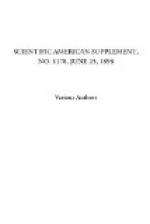COMBINATION AND SUB-COMBINATION.
A given machine capable of a given ultimate result having been invented, a claim may be drawn to cover the combination of elements comprised in the machine. Such claim will cover the machine as a whole. But, the fact being recognized that many machines are, after all, composed of a series of sub-machines, and that these sub-machines, in turn, are composed of certain combinations of elements, and that within these sub-machines there are still minor combinations of elements capable of producing useful mechanical results, and that the sub-machines, or some of the subordinate combinations of elements within the sub-machines, might be capable of utilization in other situations than that comprehended by the main machine, it becomes important that the inventor be protected regarding the sub-machines and the minor useful combinations. Claims may be drawn for the combination constituting the main machine, other claims may be drawn for the combinations constituting the operative sub-machines, and claims may be drawn covering the minor useful combinations of elements found within the sub-machines. Each claimed combination must be operative. But secondary claims cannot be made for sub-machines or sub-combinations which are for divisional matter or matter which should be made the subject of separate patents.
MECHANICAL EQUIVALENTS.
Where an inventor produces a new mechanical device for the production of a certain result, he can often see in advance that various modifications of it can be made to bring about the same result, and even if he does not see it he may in the future find competitors getting at the result by a different construction. He analyzes the competing structure, and determines that “it is the same thing only different,” and wonders what the legal doctrine of mechanical equivalents means, and asks if he is not entitled to the benefits of that doctrine, so that his patent may dominate the competing machine.




